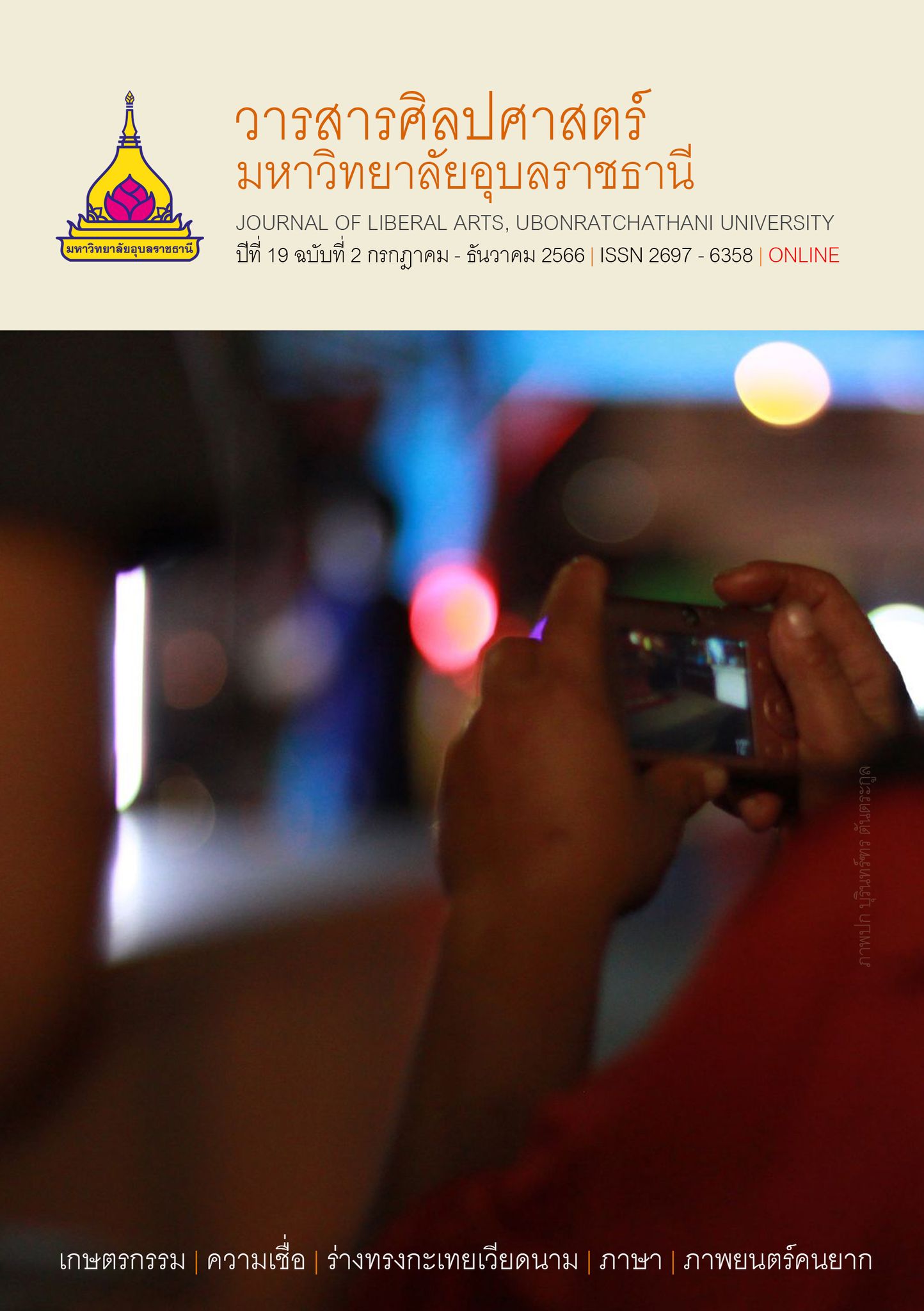Homeless Filmmakers: Creating a Forum for Homeless Messages
Main Article Content
Abstract
This research is a study of media production with homeless people in a city that has a strategy to drive towards becoming a smart city to convey the views of homeless people in a film form and use it as a tool for communicating with urban people. The researcher implemented Jacques Rancière's political concept of equality, as outlined in "The Political Thinking of Jacques Rancière," to empower homeless individuals who have no space to express themselves. This was achieved through a video shooting training course designed for homeless individuals, and subsequently, 12 trainees were selected to volunteer. The participants brought cameras to shoot videos around the Khon Kaen municipality. The researcher then gathered these videos and edited them into a 60-minute film. The film was later screened in public to foster discussion and gather their viewpoints.
The results of the study are divided into 2 parts: media production for homeless people and creating a space to communicate with urban people. Regarding the first part, media production by homeless people is divided into 3 types: The first type is filmmaking primarily for enjoyment. Due to limited access to movie recording equipment, the activity is relatively exotic to them. Consequently, the trainer ensured that the tasks were uncomplicated, often involving practices such as setting up a stationary camera on the floor or wall. This limitation results in diverse perspectives captured in the images. The second type is about motivation for homeless individuals to create films is the prospect of earning a wage. In such cases, the images obtained may be few in number and exhibit repeated views. This is often due to the recordings being done within the proximity of their residences. The final type involves producing films to portray the hardships of life, specifically addressing the social problems contributing to homelessness, such as drug issues, family problems, mental health challenges, and involvement in illegal activities. Due to the sensitive nature of these topics, the recorded images tend to focus on general subjects, for example, traveling, eating, and sleeping, which avoid the disclosure of specific details.
Given the results of the second part of the study, which aimed to provide a space for communication with urban people, it is suggested that those movies have the power to spark discussions on previously unseen aspects. This includes two crucial dimensions: images of cities from perspectives never before witnessed and images of homeless people never before portrayed. In essence, the act of recording these motion pictures serves as an alternative activity that provides a sense of relief for homeless individuals. Simultaneously, it becomes a means of expressing their identity as citizens.
Downloads
Article Details

This work is licensed under a Creative Commons Attribution-NonCommercial-NoDerivatives 4.0 International License.
References
References
Archawanantakul, S. (2018, 11 June). "People" must come before "Technology" (1) about "Smart City" and the situation of Bangkok. [in Thai]. Thaipublica. Retrieved April 10, 2023, from https://thaipublica.org/2018/06/is-bangkok-smart/
Archawanantakul, S. (2018, 25 June). “People” must come before “Technology” (2) Looking at “Smart City” Singapore. [in Thai]. Thaipublica. Retrieved April 9, 2023, from https://thaipublica.org/2018/06/singapore-smart-city-1/
Charoensinolan, C. (2020). The Political of Jacques Ranciere. Bangkok: Sommadhi Thaipublishing.
Chuaduangpui, K. & Ponthip, A. & Wattananamkul, V. and Prasertsuk, S. (2018). Homeless way of life in Khon Kaen City Municipality, Khon Kaen Province. [in Thai]. Veridian E-Journal, Silpakorn University, 11 (2). 1341-1362.
Krompakdee, N. Homeless Friends Network. Interview. January 25, 2022.
Machares, K. (2021, 14 May). Voice from Khon Kaen “Homeless…not without friends” let's fight against COVID-19 together. [in Thai]. HECITIZEN.PLUS. Retrieved April 10, 2023, from https://thecitizen.plus/node/44264
Srisuphap, T. (2020, 25 December). New Year's Eve welcome new year Send concern to homeless friends. [in Thai]. THECITIZEN.PLUS. Retrieved October 11, 2023, from https://thecitizen.plus/node/38026
Miri, Y. (2023). Tokyo Ueno Station. (Saksamutranun, T. translator). Bangkok: Prism Amarin Printing and Publishing.
Orwell, G. (2017). Down and Out in Paris and London. (Suwannanon, B. translator). Bangkok: Typhoon Studio.
Steinbeck, J. (2006). The Grapes of Wrath. (Chanpen, N. translator). Bangkok: Thai Quality Books.
Thammakaew, T. (2014). Exile. Bangkok: Matichonbook.
Visetpricha, B. (2017). Lok-Kong-Kon Rai-Ban. Nonthaburi: Sameskybooks.
Visetpricha, B. (2018). Street Line: Street Anthropology in Manila. Bangkok: Way of Book.
Visetpricha, B. (2019). The Right to the City. [in Thai]. Research article. Faculty of Sociology and Anthropology, Thammasat University,
Visetpricha, B. (2021). Ban-Tee-Glub Mai-Dai. Bangkok: The Mirror Foundation.

